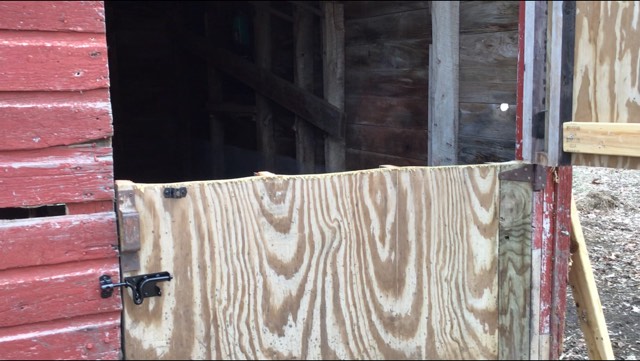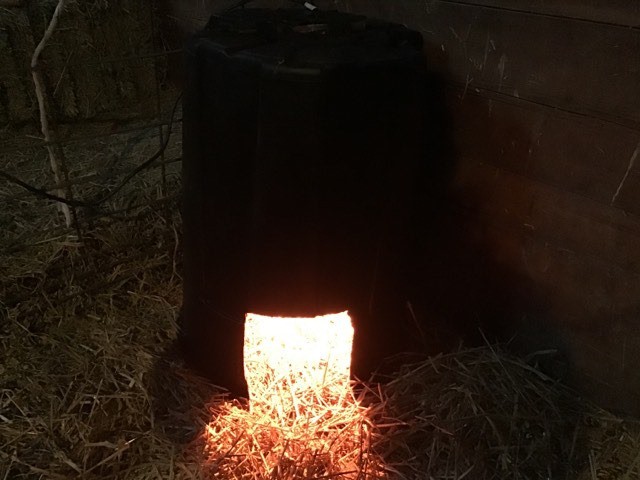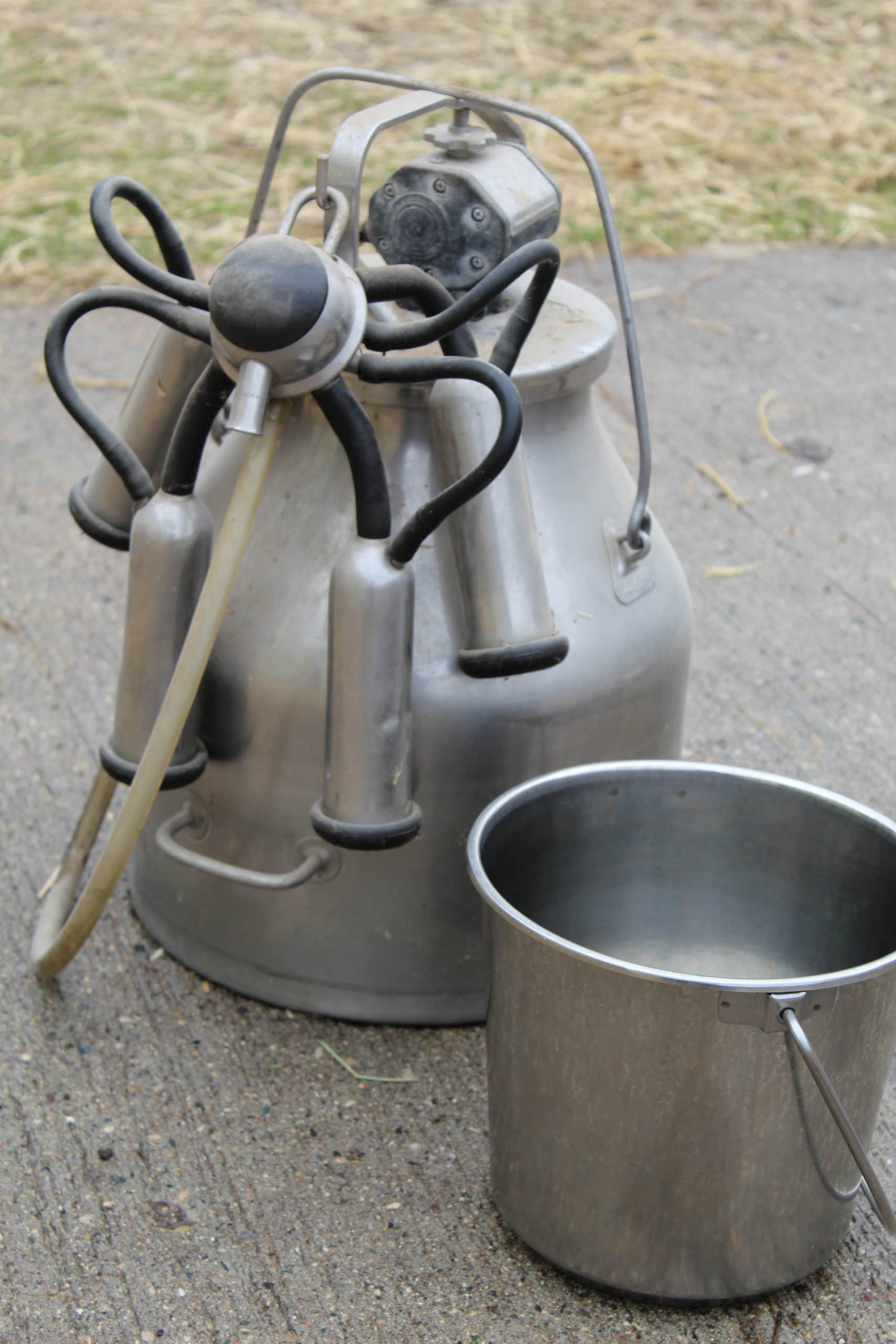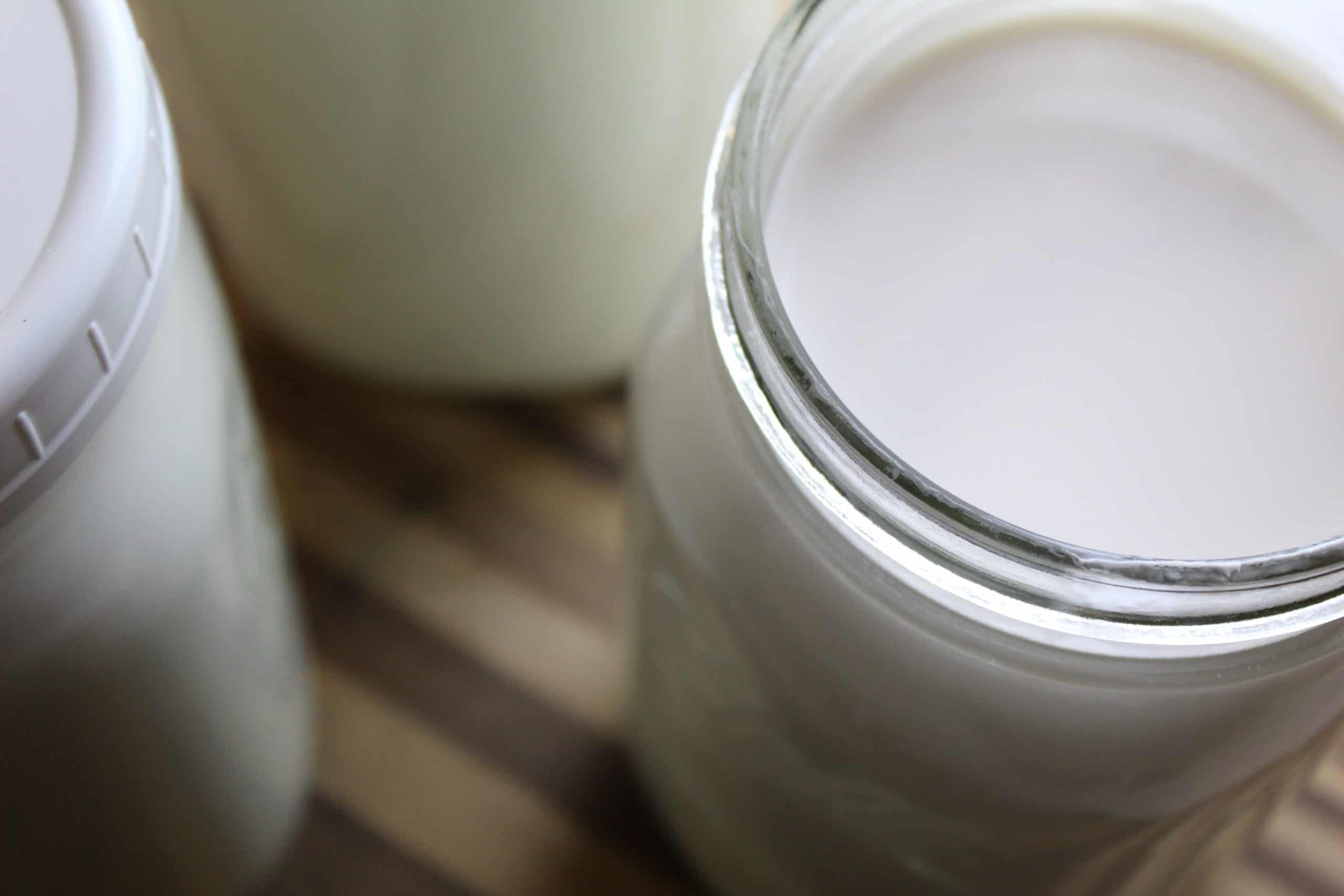Nubian Goats
Our farm is home to a small herd of registered Nubian goats. Let’s take a look at this popular breed and why we choose to have them on our farm.
Where are Nubian Goats From?
Contrary to popular belief, Nubians likely didn’t originate from the Nubia regions of Sudan or Egypt. Back in the 1800s, British and French goat breeders called any goats that were from Africa or India with a curved roman nose a “Nubian”.
These curved nosed goats were cross bred with the local dairy breeds of the time. Another dairy breed brought into the mix was the Swiss Alpine. This mishmash of breeds is the result of our current North American Nubian that we know and love today. (Source 1)
When did Nubians come to the United States?
Nubians arrived here in the late 1800s but it was really in 1913 when the breed got a foothold in the Americas.
Are Nubian Goats Rare?
Nope! Nubians are actually the most common registered goat in the United States.
You do have some color variations such as moonspots that are a little more rare/desireable.
What do Nubian goats look like?
The two hallmark features of a Nubian are the long hanging ears, sometimes called “lop” ears. They also have a curved a.k.a. Roman nose.
They can be any number of colors including solid, patterned, spotted, etc. Our Nubians are brown and white, solid brown with a dark dorsal stripe, black/brown/white, and brown/white/spotted.
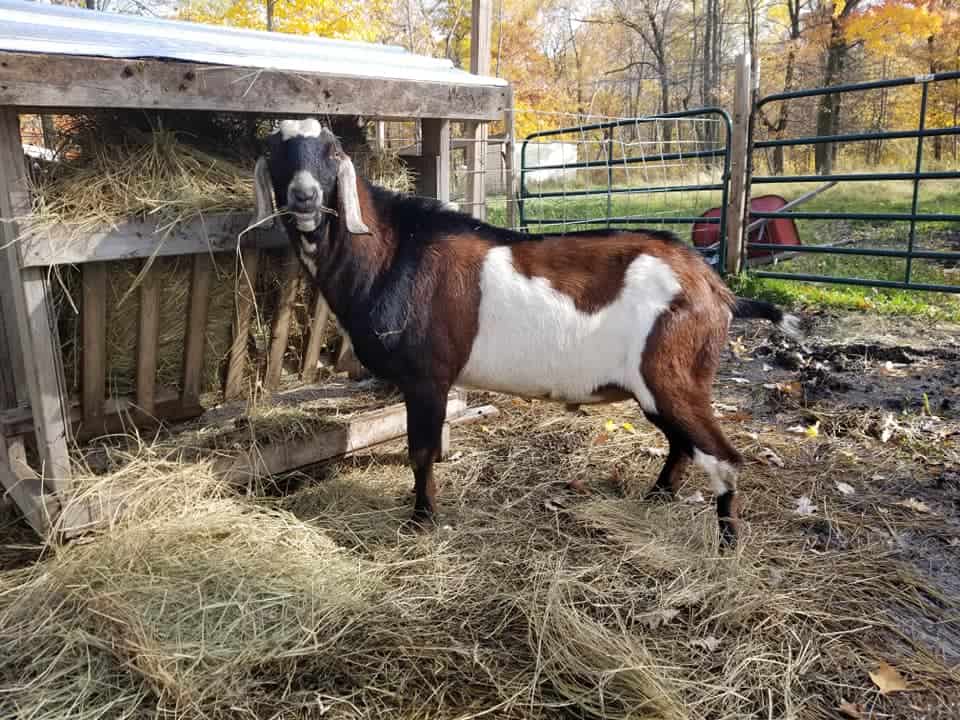
Are Nubian goats good for meat or milk?
Both! Like all dairy breeds they won’t have as much meat on them as a Boer or other meat breed but they certainly make suitable meat goats.
However, where they really shine is milk production. Our doe currently gives 3/4 a gallon per day. The milk is creamy and tastes as good if not better than cow’s milk. No gamey flavors here.
Nubians will produce less milk than other breeds but it has a higher butterfat content.
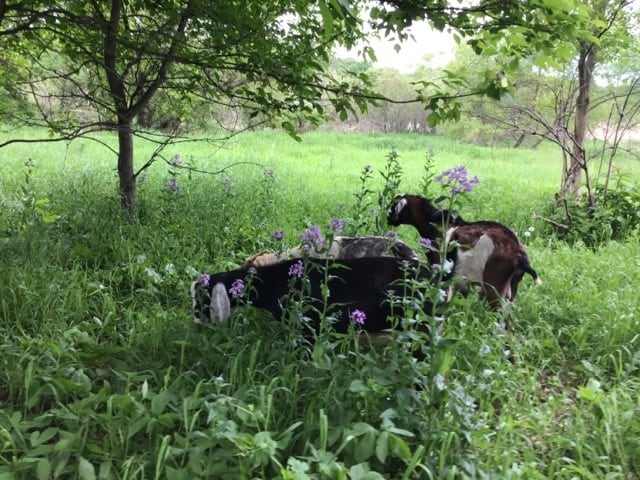
How do Nubians handle cold weather?
Nubians do well in warm temperatures but can also handle cold fairly well. as I write this it is -29 F outside. No animals really do particularly well in that kind of weather!
With our Nubians I’ve noticed each animal handles the weather differently. Our primary doe has a very thin hair coat, so she is the first to get shivery, usually in the teens. Our Nubian buck, however, has a very thick hair coat and handles the cold very well.
Canadians raise Nubians, and Delci over at a Life of Heritage raises them in Montana.
With dry bedding, a place out of the wind, and plenty of hay, Nubians can do alright in the cold.

Do Nubians have horns?
Yes. You will have horns unless you have polled (meaning hornless) genetics. You can purchase naturally polled animals but they might cost you more. I honestly don’t know what the combination of dominant genes needs to be (mom hornless vs. dad hornless or both).
What are Mini Nubians?
Mini Nubians are a cross between Nigerian Dwarf and a Nubian goat. The result is a great milk producer that is a little bit sturdier. The Nubian genetics also make for larger teats that are easier to milk.
Are Nubian Goats Friendly?
Like any animal this will depend on their genetics and how much they were handled.
From my experience and what I’ve read, they tend to be a very friendly breed that will bond with humans and be easy to handle.
Nubians are known for being LOUD and dramatic. When we had to give Grace a shot this winter she screamed, stomped around, and finally collapsed and stuck her head in a bucket with her eyes closed. She was and is totally fine.
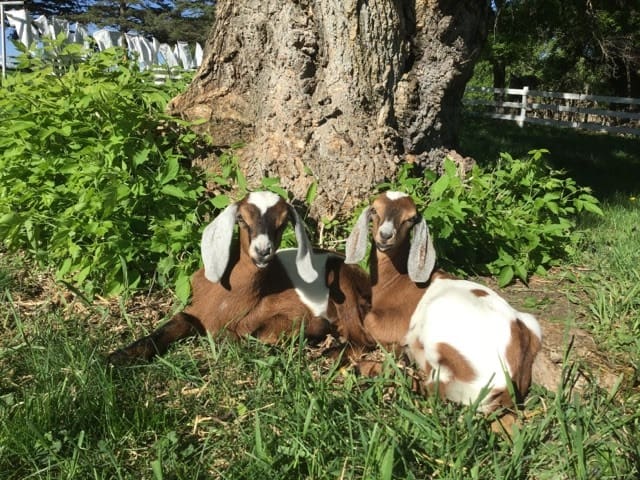
How big are Nubian Goats?
They tend to be larger goats, weighing anywhere from 100- 180+ pounds. We have a buck who is on the smaller side and a smaller doe as well. I hope to continue breeding for a the smaller genetics.
How long do Nubian Goats live?
They can live up to fourteen years if properly cared for. Most does will end their fertile days around nine or ten years of age.
Meet our Nubians
We currently have six Nubian goats on the farm.
Graham Cracker
The first is Graham Cracker. He is our resident buck and is two years old. Graham has a very sweet disposition and is small for a buck, which I actually like. He also has a thick hair coat which I hope he passes on to his kids.

Sweet Pea and Honeybee
These girls were born to our doe Grace, in May of 2020. Sweet Pea of course is very cuddly and likes to nibble on my hair. Honeybee is a little more stand-offish but she still comes for cuddles. I didn’t know their sire, but they so far seem to be a little sturdier than their mother.
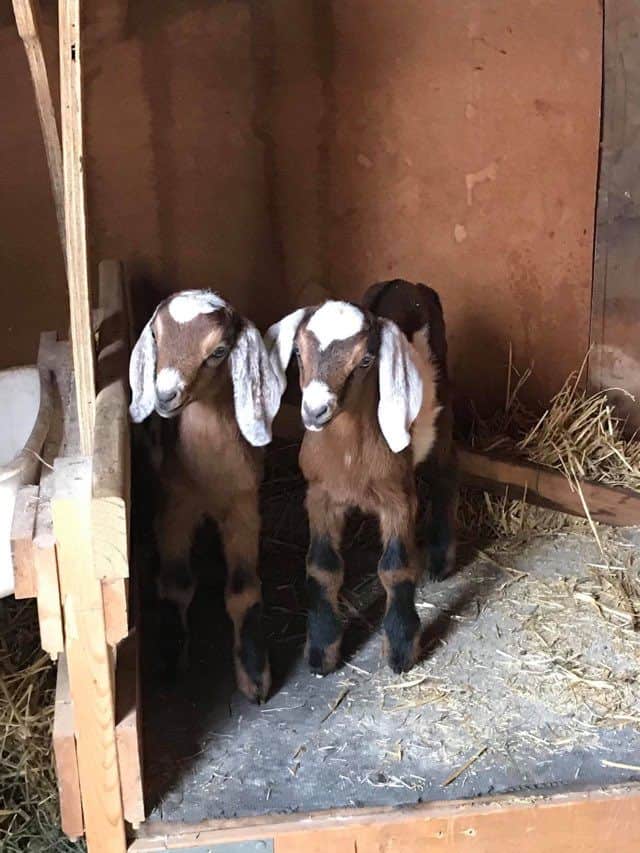
Grace
Grace is three years old and is our mama doe. She has been the only Nubian we have milked the last two seasons. Grace is very dramatic and very vocal. She loves attention and when she was in our front paddock would yell at us if we walked down the road for a walk.
Unfortunately she isn’t a great mom, so we will be selling her in the spring of 2021.
I don’t have a picture of her where she isn’t moving but you can see her crashing my Jersey cow video here.
Herschel and Penny
These two cuties were born in early February of 2021. They are Grace and Graham Cracker’s kids. So far Penny is very opinionated and pushy, whereas Herschel just wants attention. At this point they are only two weeks old so I don’t know much of their personality yet. Penny will stay with us on the farm and Herschel will registered and sold once he is old enough to wean.
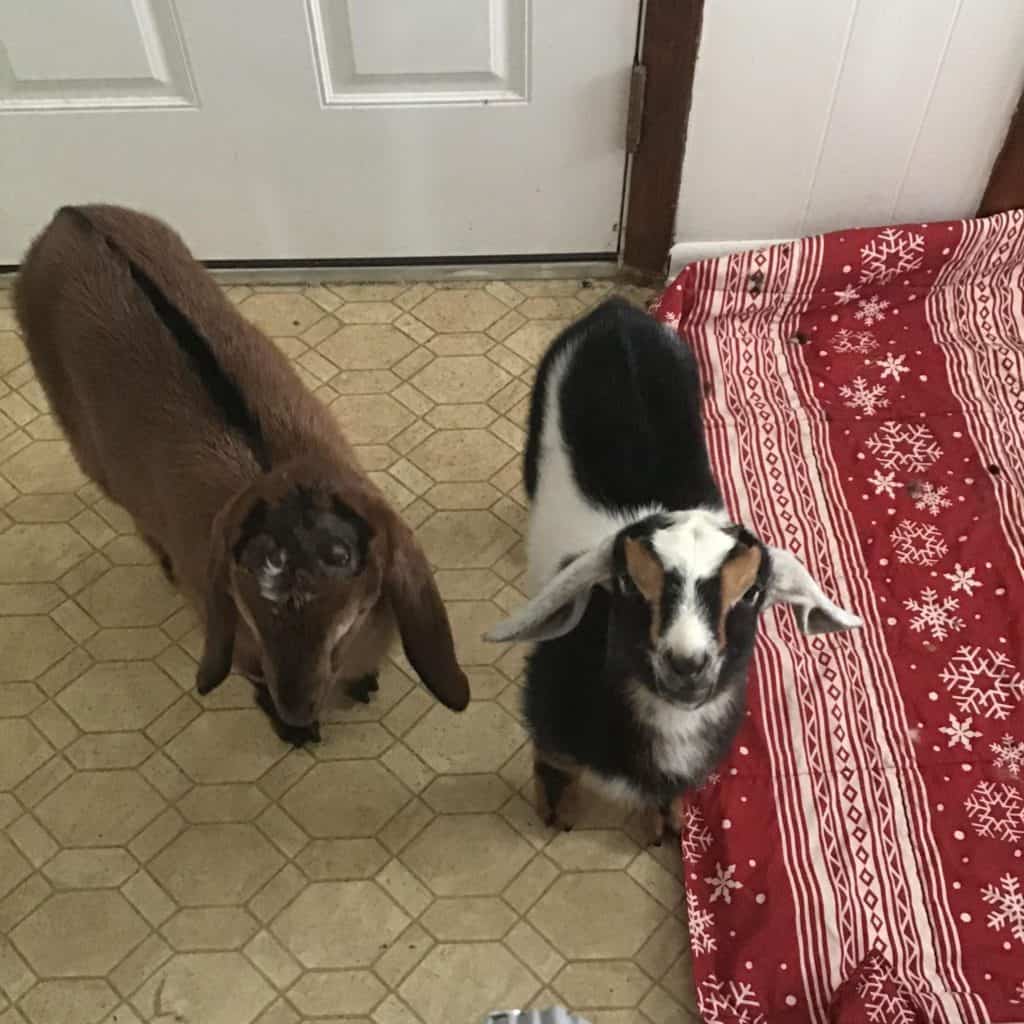
Sucre
Alright so Sucre isn’t a Nubian but I felt bad talking about all our other goats and not her. She is a meat goat/dairy goat cross. Since we are selling Grace this spring, we plan to keep Sucre to she how she does as a milk goat. She has great genetics so we have our fingers crossed. She is also bred to Graham Cracker.

Watch and Learn
Want more goat content?
Visit the goat tag for a DIY shelter, pallet feeder, making a goat door, and more!
Pin it for Later
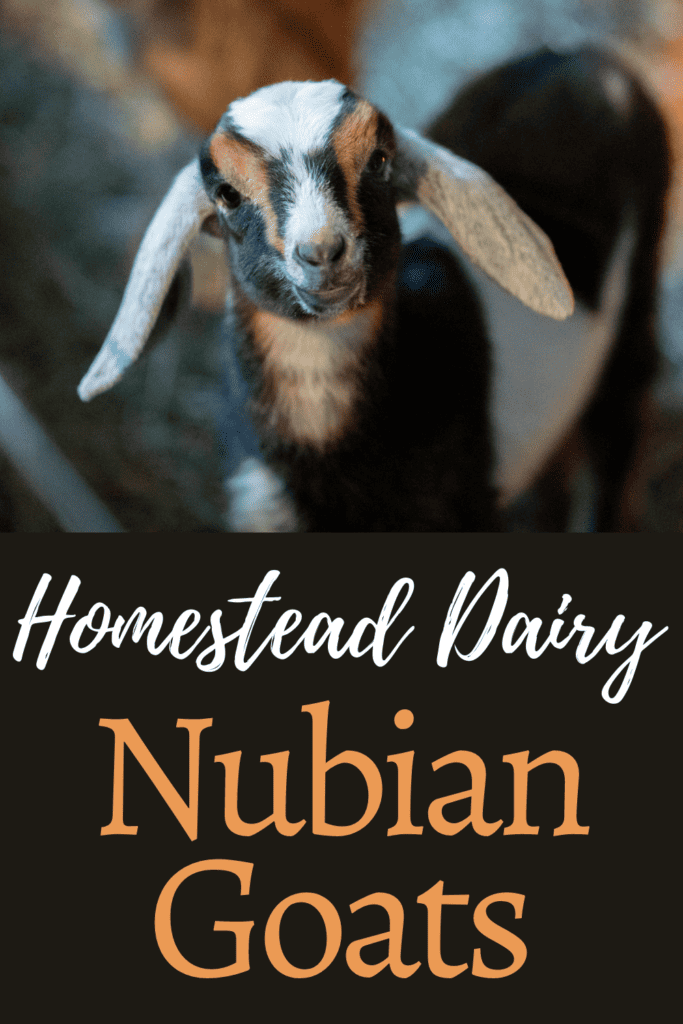
Sources
- Storey’s Illustrated Guide to Sheep Goats Cattle and Pigs by Carol Ekarius
- Storey’s Guide to Raising Dairy Goats


